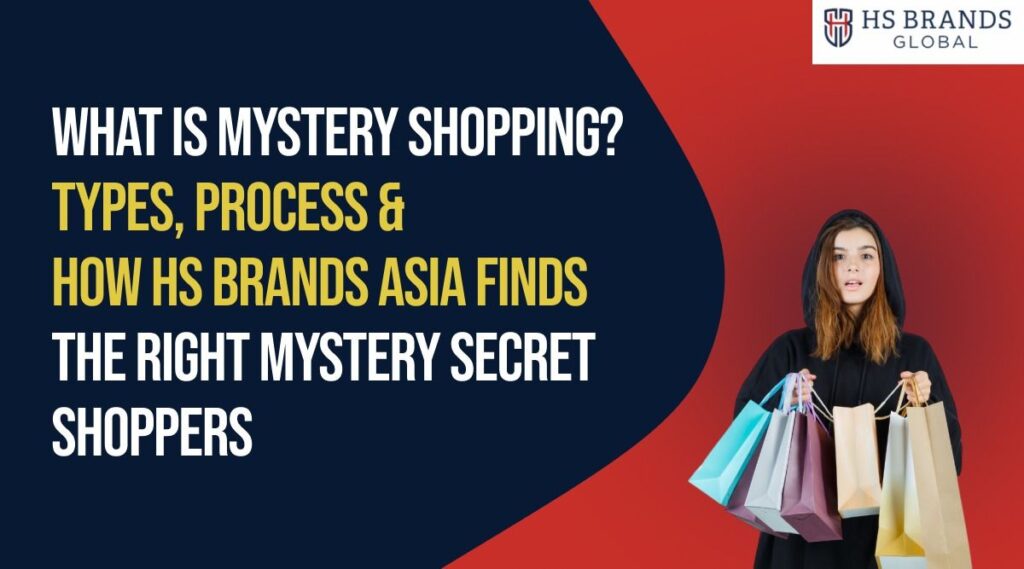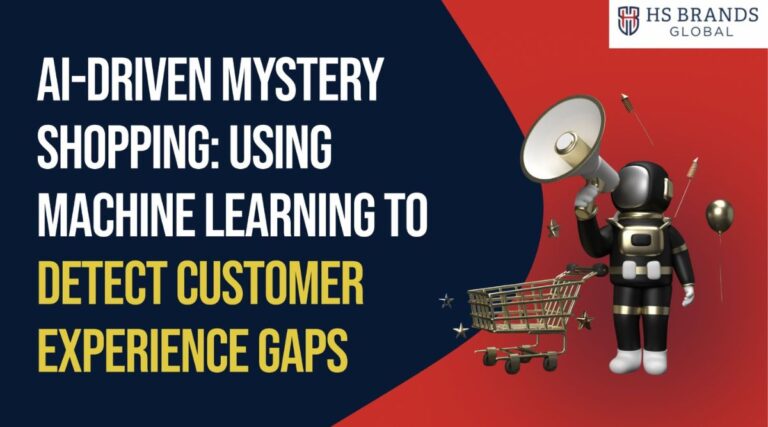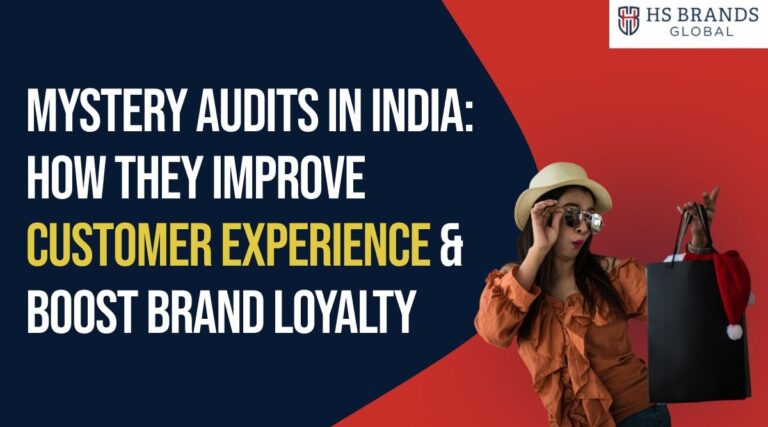A shopper walks in or visits your website and notices everything: the greeting, the wait time, even the background music. Right after the visit, they snap photos, add notes, and send a report straight to your inbox. No secret cameras or disguises, just quick proof of what works and what needs attention. Mystery shopping turns those insights into fixes you can make the very next day.
In 2025, all runs on a simple phone app and cloud dashboard. Qualified Mystery shoppers test your store, site, or delivery process against clear standards. You instantly see scores, trends, and how you compare with competitors.
The result: fewer bad reviews, happier customers, and an experience that keeps improving.
Now, let’s dive into what mystery shopping is, who mystery shoppers are, and everything else you need to know.
What Is Mystery Shopping?
Mystery shopping is when a business pays someone to pose as a regular customer, walk through the whole buying experience, and rate how things go. Put simply, mystery shopping turns everyday visits, store walk-ins, website checkouts, and customer-support calls into clear, data-backed insights. Because staff don’t know they’re being assessed, you see the experience exactly as real customers do, from greeting to goodbye.
Mystery shopping is like a live health check for your customer experience. Each undercover visit generates real-world data, wait times, staff friendliness, product accuracy that feeds straight into your CX dashboard. When scores dip, you can pinpoint the exact touchpoint that failed, assign a fix, and watch satisfaction bounce back on the next audit.
By turning everyday interactions into measurable insights, mystery shopping keeps your entire customer journey tuned, consistent, and ready to convert first-time buyers into loyal fans.
Who Is a Mystery Shopper?
A mystery shopper is a trained evaluator hired to act like an everyday customer and record each step of a buying journey. The mystery shopper meaning goes far beyond casual note-taking: they use a brand-supplied checklist to time queues, gauge staff friendliness, verify product accuracy, and assess ambience. Photos, scores, and comments feed directly into business dashboards, flagging weak spots before they dent ratings or revenue.
By turning real interactions into actionable data, the program often runs as a mystery secret shopper audit it helping companies fine-tune service, lift customer satisfaction, and convert first-time buyers into loyal advocates.
What are the different types of Mystery Shopping?
Mystery shopping and mystery audit programs come in many formats, each designed to test a specific customer journey. Below are the most common types you can mix and match to fit your business.
In-Store Retail Visits
Evaluates greeting, product availability, staff knowledge, cleanliness, and checkout speed. Shoppers follow a checklist and capture photos of shelves, signage, and receipts. Scores show where service slips and which stores set the standard.
E-commerce Website Checkout
Tests site navigation, search, product info, promo code logic, cart flow, and payment. Shoppers flag friction like broken links or surprise fees. You get a clear view of conversion blockers.
Mobile App Journey
Checks app onboarding, login, search, push notifications, and in-app purchase. Notes cover load times, crashes, and clarity of messages. Ideal for brands with app-first customers.
Call Center and Phone Support
Measures speed to answer, tone, problem resolution, and policy accuracy. Shoppers use defined scenarios, then rate knowledge and follow-through. Great for spotting training gaps.
Live Chat and Social DMs
Audits response time, helpfulness, and consistency across chat, WhatsApp, and Instagram DMs. Looks for canned replies versus real solutions. Helps you set SLAs that match customer expectations.
Restaurant and QSR Dine-In/Takeaway
Covers order accuracy, food quality, hygiene, speed, and upsell. Shoppers review ambiance and staff attentiveness. Perfect for standardizing multi-location operations.
Delivery and Last-Mile Experience
Follows the order from payment to door. Tracks ETA accuracy, courier behavior, packaging, and damage. Useful for brands where on-time delivery drives reviews.
Services and Appointments (Salon, Clinic, Repair)
Evaluates booking, reminder communication, wait time, professionalism, and aftercare advice. Shoppers confirm if promised services match what was delivered. Highlights gaps that hurt retention.
Compliance and Policy Audits
A mystery audit that verifies ID checks, refund policy, safety steps, or brand scripts. Focuses on pass or fail against the rules. Essential in regulated categories.
Competitor Shops
Runs the same checklist on rival brands. Compares price, speed, perks, and service quality. Shows where you win and where to improve.
B2B and Field Sales
Assesses response to inquiries, demo quality, proposal clarity, and follow-up. Useful for distributors and enterprise sales teams. Identifies steps that stall deals.
Omnichannel Journey
Combines channels, for example, social inquiry to the website, to store pickup. Tests handoffs, data consistency, and recognition of loyalty status. Maps the full experience end-to-end.
Benefits of Mystery Shopping
Mystery shopping turns real customer journeys into clear, fixable insights. Do a Mystery audit with trained Mystery Secret shopper evaluators to unlock the benefits below.
Unbiased customer view
Independent evaluations reveal what everyday customers actually experience, not what internal reports assume.
Faster feedback loop
Mobile capture and quick scoring turn visits into actions within hours, before issues become public complaints.
Training and coaching clarity
Pinpoint specific skill gaps in scripts, product knowledge, or soft skills so teams know exactly what to improve.
Brand and policy compliance (Mystery audit)
Verify ID checks, hygiene, refund rules, and brand standards are followed consistently across locations.
Fewer negative reviews
Catch repeat problems early, reduce frustration, and protect ratings on review platforms.
Higher conversion and sales
Remove friction in search, checkout, or service flows and measure the lift in basket size or upsell.
Competitive benchmarking
Run comparable evaluations on rival brands to see where you lead or lag and adjust priorities.
Promotion and pricing accuracy
Confirm signage, promo codes, and displayed prices match what head office planned.
Omnichannel consistency
Check handoffs from social or chat to web to store so the experience feels seamless everywhere.
Safer, verified reporting
GPS stamps, timestamps, and media evidence make each Mystery Shopper report reliable and audit-ready.
Launch and pilot testing
Test new stores, menus, features, or policies in the market, then refine before scaling.
Operational efficiency and cost control
Use data to drop low-impact tasks, double down on what works, and optimize labor and processes.
Top 5 Industries That Benefit from Mystery Shopping
Mystery shopping (and focused mystery audit programs) reveal what customers actually experience across frontline service, digital flows, and delivery. Here are five sectors where a Mystery Shopper program consistently moves the needle.
Retail & Supermarkets
Checks greeting, product availability, shelf standards, billing accuracy, and returns. Photo evidence confirms planograms and promo signage, while timing data exposes queue bottlenecks. Outcome: cleaner execution, faster checkout, and fewer price/receipt disputes.
Restaurants & Quick-Service (QSR)
Audits speed, order accuracy, hygiene, upsell, and friendliness—at dine-in, takeaway, and drive-thru. Temperature and packaging checks reduce complaints and food waste. Result: higher CSAT, better online ratings, and tighter food-safety compliance.
E-commerce & Last-Mile Delivery
Tests search, product pages, cart/checkout, payment, and ETA accuracy through to the doorstep. Shoppers flag friction like surprise fees, poor packaging, or missed notifications. Impact: fewer cart abandons, on-time delivery, and stronger repeat purchases.
Banking & Financial Services
Evaluates branch greeting, queue handling, KYC compliance, product explanation, and cross-sell ethics. Phone/chat audits ensure consistent advice and disclosure. Benefit: regulatory-safe service, clearer communication, and improved trust.
Hotels & Hospitality
Covers reservation flow, check-in speed, room readiness, housekeeping, issue resolution, and loyalty recognition. Omnichannel checks (web, call, OTA) catch broken handoffs. Gains: fewer service failures, higher review scores, and better RevPAR-driving experiences.
Can Mystery Shopping Improve Customer Satisfaction
Yes—mystery shopping is a fast lane to better Customer Experience. It turns real visits into timestamped evidence and clear action items, so you can remove friction, standardize service, and prioritize training where it matters most. For the full playbook, see how a mystery shopper improves customer experience, and use these five ways to measure customer satisfaction to track the impact.
What Skills Make a Mystery Shopper Great
Wondering about the Mystery Shopper’s meaning in practice? It comes down to a specific skill set that turns everyday visits into reliable, actionable data. For a deeper look at what mystery shoppers do, start here—then check the skills below.
- Sharp observation: Notices greetings, accuracy, cleanliness, and timing without missing small details.
- Objectivity: Reports facts, not opinions—key for trusted Mystery shopping results.
- Clear documentation: Writes concise notes and attaches photos/receipts so findings are easy to verify.
- Checklist discipline: Follows the brief step-by-step; no improvising that could skew a Mystery audit.
- Tech fluency: Uses mobile apps for uploads, timestamps, and geotags without hiccups.
- Time management: Completes visits and reports on schedule so insights stay fresh.
- Discretion & professionalism: Blends in naturally; never reveals the evaluation.
- CX mindset: Evaluates from a real customer’s point of view, not as a critic.
- Analytical thinking: Spots patterns across visits and highlights root causes, not just symptoms.
- Ethics & confidentiality: Handles data responsibly and respects privacy at all times.
A top-tier Mystery shopper, sometimes called a Mystery Secret Shopper, combines all of the above to deliver consistent, decision-ready insights.
Interested in becoming a mystery shopper with HS Brands Asia? Read more in our 2025 guide: How to Become a Mystery Shopper in 2025.
5-Step Process of Mystery Shopping
Mystery shopping follows a simple plan: execute, improve. Here’s how a typical program runs from brief to measurable fixes.
1) Set Objectives and Checklist
Define what to test: greeting, accuracy, cleanliness, checkout speed, or policy compliance. Convert goals into a clear, step-by-step checklist.
2) Design the Scenario
Map the exact customer journey to audit—store visit, website checkout, call, or delivery—and note any rules for receipts, photos, or timing.
3) Brief and Assign the Mystery Shopper
Match a trained evaluator to the location or channel. Share the checklist, timing window, and evidence requirements inside the app.
4) Perform the Visit and Capture Evidence
The shopper completes the journey, records notes, takes photos or screen grabs, and submits everything via mobile for verification.
5) Review, Score, and Act
Reports appear on a dashboard with scores and comments. Prioritize fixes, assign tasks, and schedule a re-audit to confirm improvements.
What Are the Myths and Misconceptions About “Mystery Shopping” and “Mystery Shoppers”?
Many assume mystery shopping is spying, a “gotcha” exercise, or even a paid-review scam. In reality, professional programs use clear checklists, verified evidence (timestamps, receipts, photos), and privacy rules to create fair, actionable feedback, not punishments.
Another myth is that mystery shoppers only assess retail or that it’s too costly for smaller brands; in practice, it spans restaurants, banking, e-commerce, delivery, and more, with scalable options. For a deeper breakdown of what’s true vs. false, read our guide on mystery shopping myths and misconceptions.
Conclusion
In 2025, mystery shopping is a fast, evidence-driven way to improve customer experience, compliance, and conversion—across stores, apps, call centers, and delivery. Mobile capture and AI dashboards turn real visits into clear action items, closing the loop from “insight” to “fix” in hours. Paired with coaching and CX metrics, it helps teams standardize what great service looks like and scale it everywhere.
Curious how a modern program would look for your brand? Explore offerings at HS Brands Asia. Ready for a sample checklist or quick walkthrough? Contact the team and kick off a pilot.








